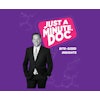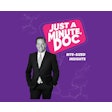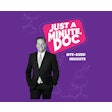If you've worked in dentistry for any length of time, you know that "organized chaos" is a real thing. I've worn just about every hat in the office: hygienist, assistant, admin, toilet fixer, and now director of operations.
 Stephanie Adkins.
Stephanie Adkins.
If there's one thing I've learned, it's this: No matter how amazing your team is (and they are), if you don't have systems in place to manage tasks, the wheels can fall off the dental bus faster than you can say "emergency walk-in."
So, how do we keep things running smoothly? Task management and checklists.
I know, checklists aren't exactly glamorous, but they are the unsung heroes of our practices. Whether it's a hygiene recare list, a follow-up for unscheduled treatment, or remembering to water the office plant before it fully gives up, having a system matters.
Let's take a look at three ways to wrangle your tasks into submission, ranging from budget-friendly and DIY to full-blown, premium software solutions. I've used all three and lived to tell the tale.
The DIY route: Google everything
Ah, Google, provider of answers, maps, and, yes, task management solutions. If your office is anything like ours, you probably already use Gmail. So why not harness the full might of Google Workspace?
Google Chat is great for quick, team-wide communication. You can create rooms for each department (business team, hygiene, doctors, etc.) and send quick updates, reminders, or, let's be honest, the occasional meme to keep morale high.
Google Forms are your best friend when it comes to collecting information. We've used them to track supply requests, employee time-off requests, continuing education sign-ups, and end-of-day checklists -- you name it. They're as customizable as they are underappreciated.
And let's not forget my favorite workhorse: Google Sheets. Boy, do I love a spreadsheet. Oh wait, I started to daydream, excuse me, I digress.
Anyhow, it's a digital binder, only you don't have to worry about someone spilling coffee on it. We've created everything from sterilization logs to training checklists in Sheets. You can even color-code them.
By the way, is there anything more satisfying than color-coded accountability? I think not.
The downside? Time. The initial setup can take a while. And while these tools are free or low cost, you'll need someone (it's probably you) to build the systems, train the team, and keep everything updated.
But if your practice is watching the budget or still growing, this method is a solid place to start. Just be ready to roll up your sleeves and get a little nerdy with spreadsheets.
Using your practice management software (because you're already paying for it)
Let's talk about a tool you probably already have: your practice management software (PMS). For example, we use CareStack and, if you dig into it, it has some pretty impressive task and communication tools.
CareStack has a task system where you can assign tasks to specific team members, set due dates, and track progress. There's even a chat feature so your team can communicate in real time without needing to send 12 emails about one hygiene no-show. It's like Slack and a to-do list had a baby that is built right into your patient schedule.
The best part? You're already paying for it. So many offices pay premium dollars for software they only use at 50% of its capacity. If your current system has features like task delegation, internal messaging, or customizable checklists, use them! Schedule a training or just poke around (carefully) and discover what it can do.
The downside? Like anything, it requires buy-in from the team. Some folks might prefer Post-it notes or their memory bank (not recommended). You'll need to train your staff and consistently reinforce the process so tasks aren't slipping through the cracks. But once you do, it's a game changer.
Bonus tip: Have a weekly 10-minute check-in where you review open tasks. It's quick, painless, and keeps everyone accountable without feeling like Big Brother.
Premium platforms: Slack, Trello, and the fancy stuff
If your practice has the budget and you're ready to take things to the next level, platforms like Slack, Trello, or Asana can elevate your task management game to Fortune 500 heights. These tools are sleek, user-friendly, and built for team collaboration.
Slack is a powerful communication tool that can replace internal email altogether. You can create channels for everything -- marketing, scheduling, maintenance -- and it integrates with almost every other tool on the planet. Plus, it's just fun to use.
Trello, on the other hand, is a visual task tracker. Imagine a giant bulletin board with digital sticky notes where you can move tasks from "To Do" to "Done" with a satisfying drag and drop. You can attach documents, add checklists, and assign users. It's like your brain, but prettier and more organized.
The downside? Cost and complexity. These tools come with a price tag and a learning curve. You'll need to invest some time in onboarding your team and figuring out what level of features you need. If your practice is growing quickly or juggling multiple providers, marketing campaigns, and a never-ending to-do list, this kind of tech can be well worth it.
So which one's the best?
Here's the truth: There's no one-size-fits-all. Your system should fit your practice's size, goals, and team personality.
Are you a small but mighty startup on a budget? Google's your buddy. Do you want to maximize the software you're already paying for? Dig deeper into your PMS features. Ready to splurge and streamline like a boss? Premium platforms have you covered.
What matters most is consistency. Pick a system, roll it out thoughtfully, and stick with it. A great system that's half-used is just digital clutter. However, even a simple checklist that is used well can create powerful clarity.
Final thoughts from the dental trenches
After 30 years in this wild, wonderful world of dentistry, I've seen what happens when tasks get missed: Patients fall through the cracks, team members get overwhelmed, and the mood in the office starts to fray.
But with the right tools and systems in place, your practice can run more smoothly, your team can feel more empowered, and you (yes, you!) can focus more on leading than constantly putting out fires.
Whatever path you choose -- Google hacks, built-in software, or the fancy stuff -- know that you don't have to do it all at once. Start where you are. Make small improvements. Get your team involved. And never underestimate the power of a really good checklist.
Behind every well-run dental office is a practice administrator with a plan, a spreadsheet, and probably a half-drunk caffeinated beverage.
Stephanie Adkins began her dentistry journey in 1994 as an orthodontic assistant while attending college. She joined O'Shea Dentistry as a hygienist in 2002 and is its director of operations. Adkins is a member of the American Association of Dental Office Management (AADOM) and holds the AADOM Mastership.
The comments and observations expressed herein do not necessarily reflect the opinions of DrBicuspid.com, nor should they be construed as an endorsement or admonishment of any particular idea, vendor, or organization.



















